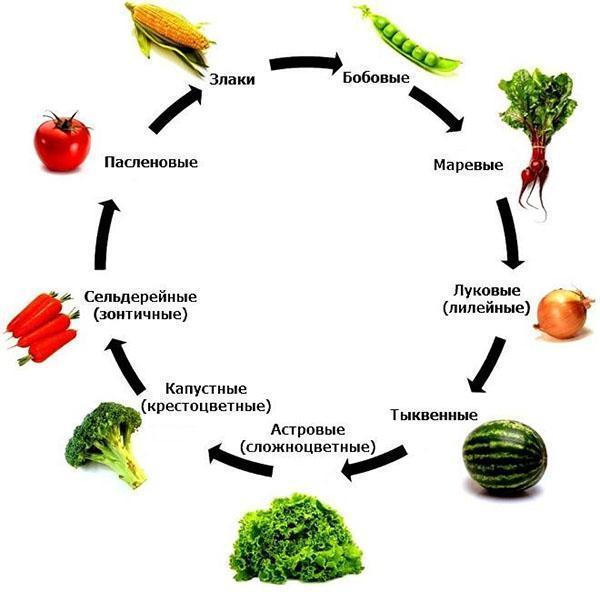Free way to improve fertility - crop rotation
 The best varieties of crops, super-new methods of pest control and cultivation twice a year, unfortunately, do not increase yields. So it's time to try crop rotation. Although the method is economical, it cannot be called simple. Technology adoption requires careful planning and understanding.
The best varieties of crops, super-new methods of pest control and cultivation twice a year, unfortunately, do not increase yields. So it's time to try crop rotation. Although the method is economical, it cannot be called simple. Technology adoption requires careful planning and understanding.
A journey to the underworld
One proverb says: "Work not until night, but wisely." Despite the painstaking actions of farmers, the result may be poor. The reason often lies in the properties of the soil. Cultivated plants absorb not only potassium, phosphorus and nitrogen from the soil, but also compounds of these chemical elements. Therefore, when planting on the same site, for example, potatoes, the composition of the land changes, and the fertility decreases. It no longer contains that supply of nutrients that are necessary for culture.
Waste is a consequence of the life of plants. Constantly being in their toxic secretions is fraught with illness, as well as exhaustion. The situation is aggravated by spores and pests that take root on the site.
The exit is very close - crop rotation
In order not to work in vain on your hacienda, you need to connect a unique crop rotation method. So, instead of potatoes after 3-4 years, it is recommended to plant:
- cabbage;
- zucchini;
- beans.
Unlike root vegetables, they eat completely different "dishes" - microelements. Their root system absorbs moisture at a different level. These plants are of no interest to pests of the predecessor crop, Colorado potato beetles and pathogenic spores.
A short cycle of soil enrichment is also used. For the wintering period or before planting (as soon as the snow melts), the garden is sown with rye / mustard.
The principle of this substitution is simple. When the earth is loaded with some varieties, then at this time it rests from others. A few years later, the honey agaric plans to castling. Tomatoes are planted in their original place after 6 years.
Alternation is a healthy lifestyle for vegetables
Throwing yourself headlong into crop rotation technology is dangerous. This is a long process and can take many years. If you hurry, you cannot avoid hardship. First, they study the features of the site well:
- bias;
- shaded areas;
- collection / graph of crops grown on it.
In agronomy, there is a book "History of the fields". It contains notes about what and when the land was fertilized, what was planted and what crop was replaced. Therefore, the gardener should start his own notebook. It draws:
- captivity of the terrain;
- placement of legumes, root crops, cereals and demanding varieties (for each year);
- sowing schedule for green manure;
- time of feeding / cultivation.
The smaller the garden, the more accurately these calculations are carried out. Among other things, experts recommend starting a system of permanent beds on your plantation. It is desirable that they occupy half of the territory.
Of course, it is always difficult to introduce something new, but then it will be impossible to live without it.